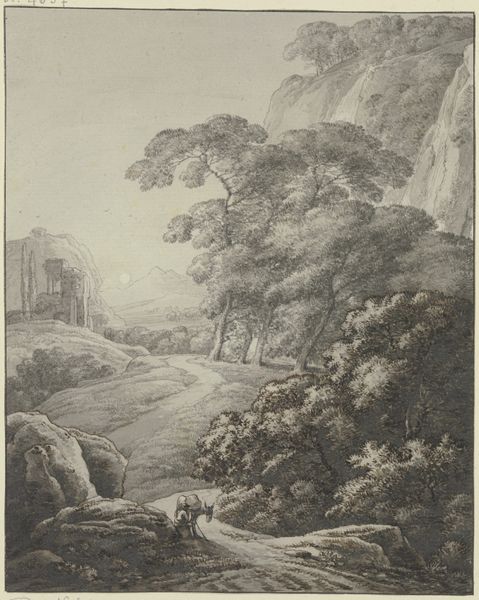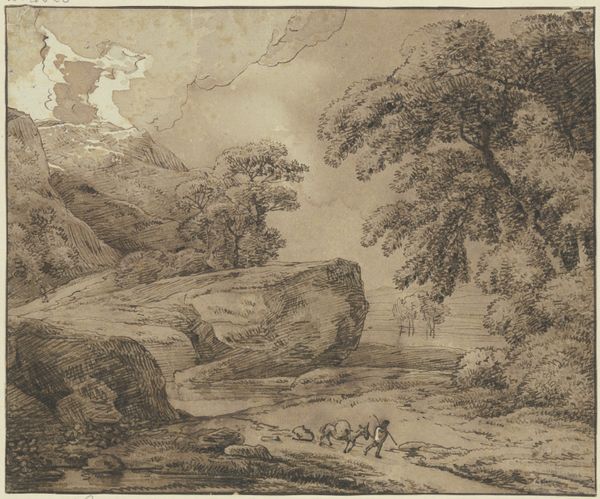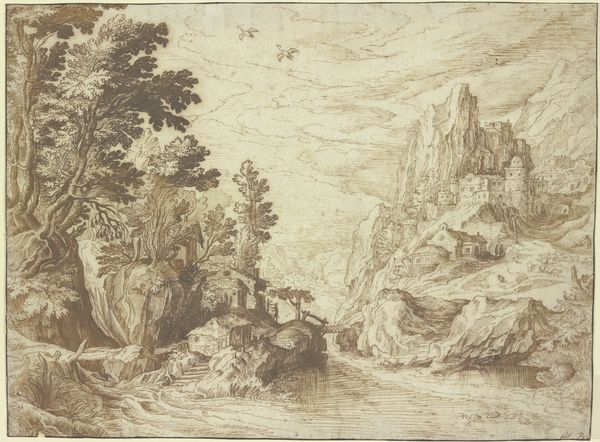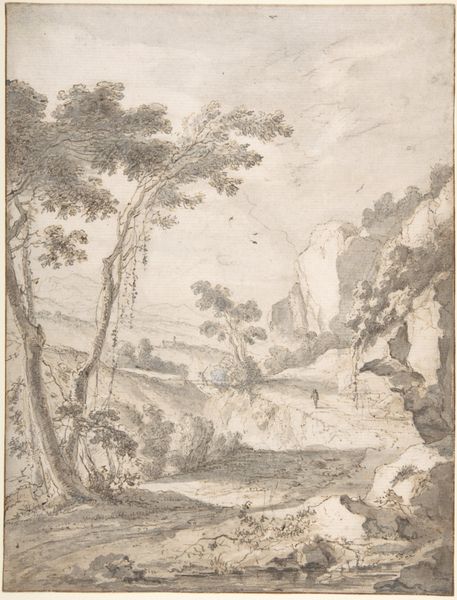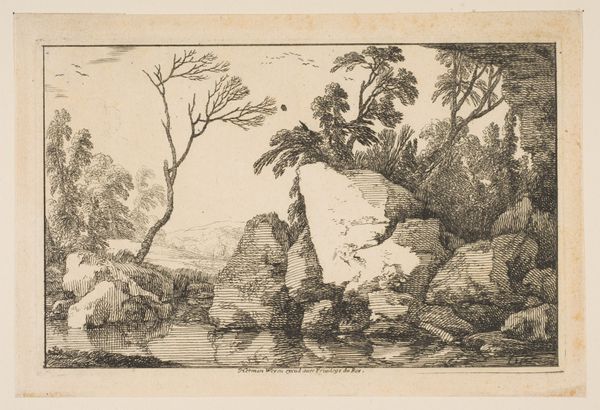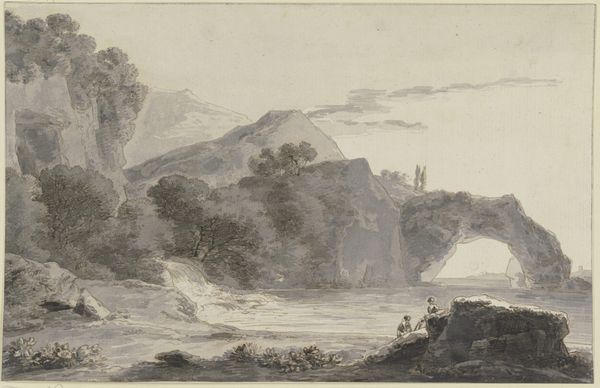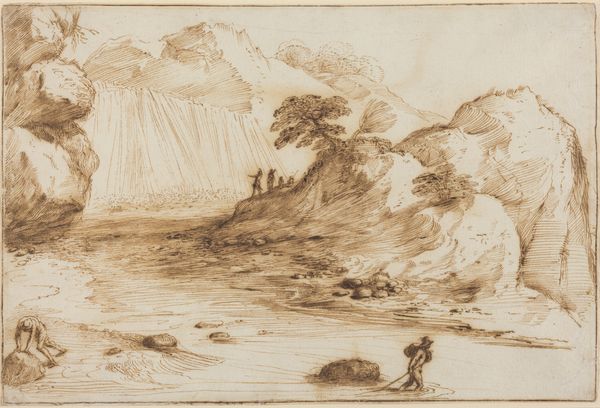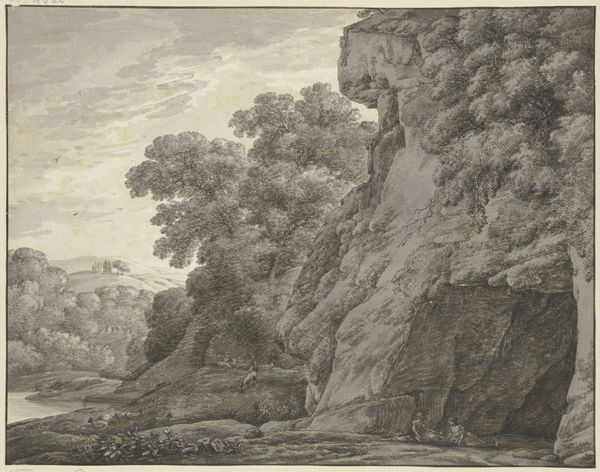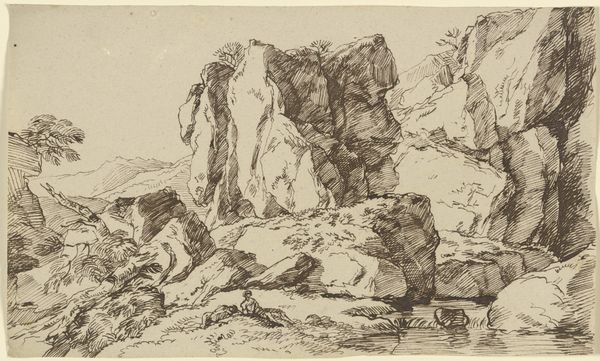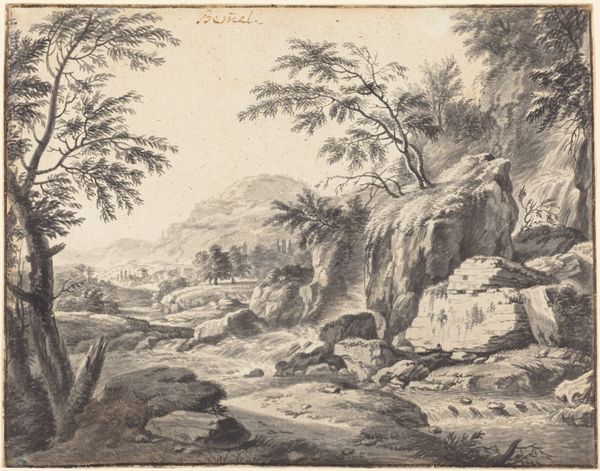
drawing, plein-air, ink
#
drawing
#
plein-air
#
landscape
#
ink
Copyright: Public Domain
Editor: This is "Felsige Uferlandschaft, im Vordergrund zwei Angler" – Rocky Coast Landscape with Two Fishermen in the Foreground – by Franz Kobell. It's an ink drawing, likely done *en plein air.* I find it incredibly tranquil, almost staged like a theatre set, with those imposing cliffs framing the scene. What strikes you when you look at this piece? Curator: I'm immediately drawn to the relationship between nature and its inhabitants, but more from an institutional lens. Landscape art became incredibly popular at this time; this drawing is a testament to how the rising merchant class sought to enshrine their relationship with nature via artistic works that shaped and codified the natural world through ordered aesthetic and social values. This work embodies a cultural fascination, wouldn’t you agree? Editor: I hadn't considered that! So, the act of commissioning such a work normalizes a specific vision of nature and its "ideal" inhabitants? Curator: Precisely. Consider where this drawing would have been displayed - in a home or perhaps later, gifted or bequeathed to a museum, reinforcing particular ideals. What story does this tell? What’s absent? Editor: Right, it’s excluding other narratives. I suppose focusing solely on the picturesque and omitting realities like land exploitation subtly reinforces a certain social hierarchy. Curator: Exactly. By overlooking elements – realities – landscape art participated in the normalization of political dominance by certain people at certain times. And while we now look at it admiring it's aesthetic values, we must understand the culture, including the silent institutional forces that facilitated production of art as an endorsement of social norms. Editor: That's really shifted my perception; I'm much more aware of how this image subtly reinforces cultural values. I definitely have to reconsider my initial 'tranquil' read of it. Curator: It’s all about context! And seeing how seemingly neutral artwork contributes to much larger socio-political narratives. It enriches our understanding so much more, no?
Comments
No comments
Be the first to comment and join the conversation on the ultimate creative platform.
